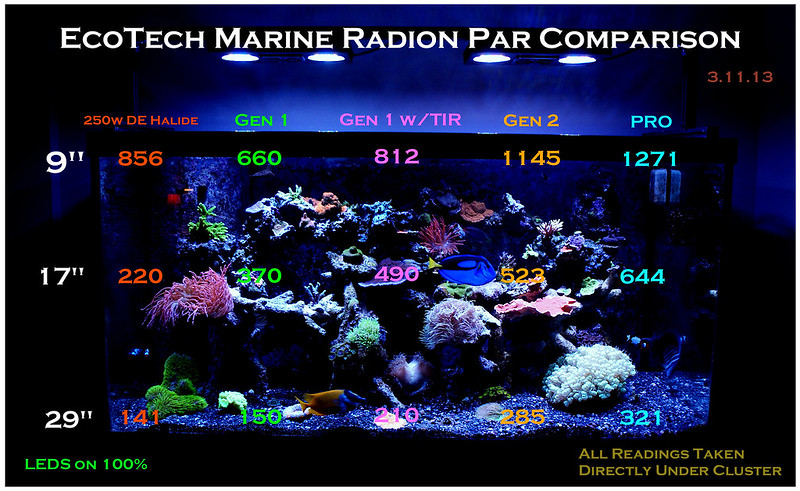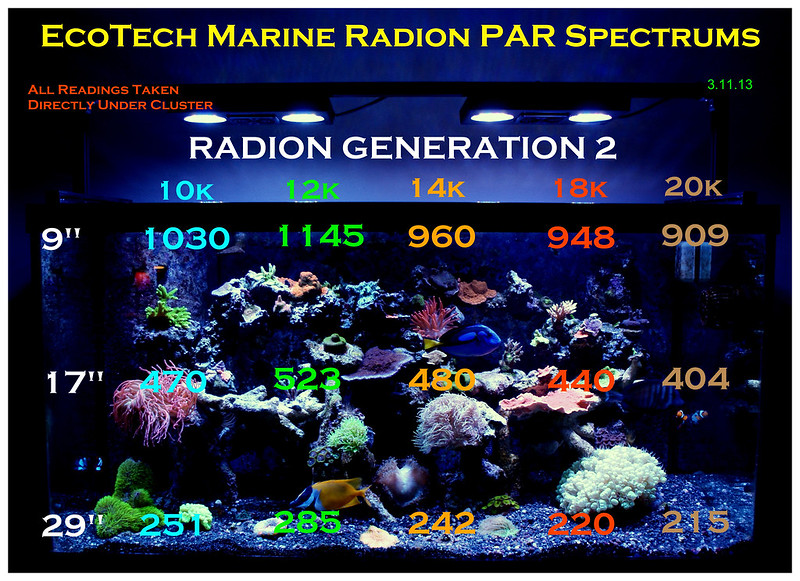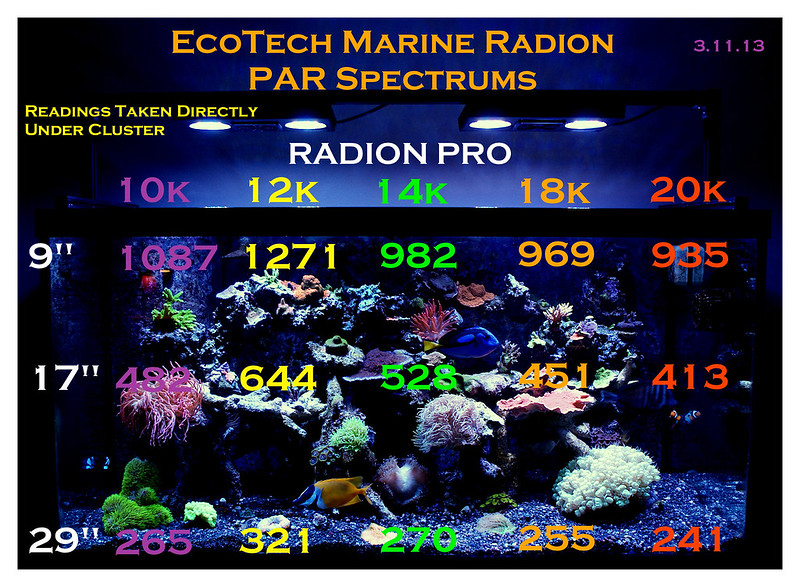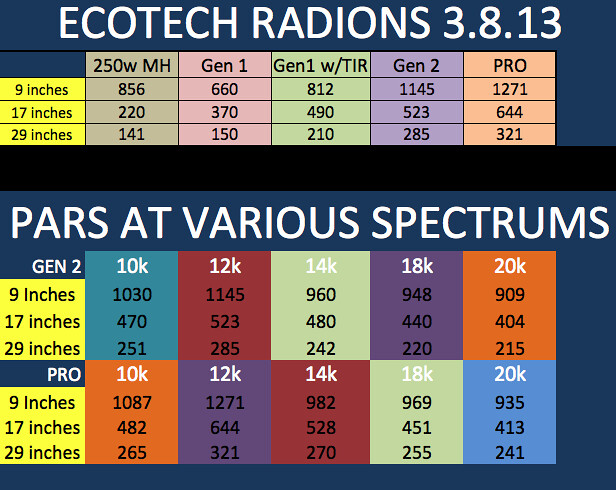Eastamherstbias
New member
I picked up a generation 2 radion and put it on my main tank (4x2x2). I now have a Gen 2 on the left side and a PRO over the right. I am going to leave it that way so I can see if the UV/Yellow makes a difference with growth and color.
HERE IS MY COMPLETED PAR CHART WITH ALL VERSIONS OF RADIONS

GENERATION 2 PAR READINGS AT VARIOUS SPECTRUMS

RADION PRO READINGS AT VARIOUS SPECTRUMS

ALL DATA POINTS ON ONE CHART

HERE IS MY COMPLETED PAR CHART WITH ALL VERSIONS OF RADIONS

GENERATION 2 PAR READINGS AT VARIOUS SPECTRUMS

RADION PRO READINGS AT VARIOUS SPECTRUMS

ALL DATA POINTS ON ONE CHART

